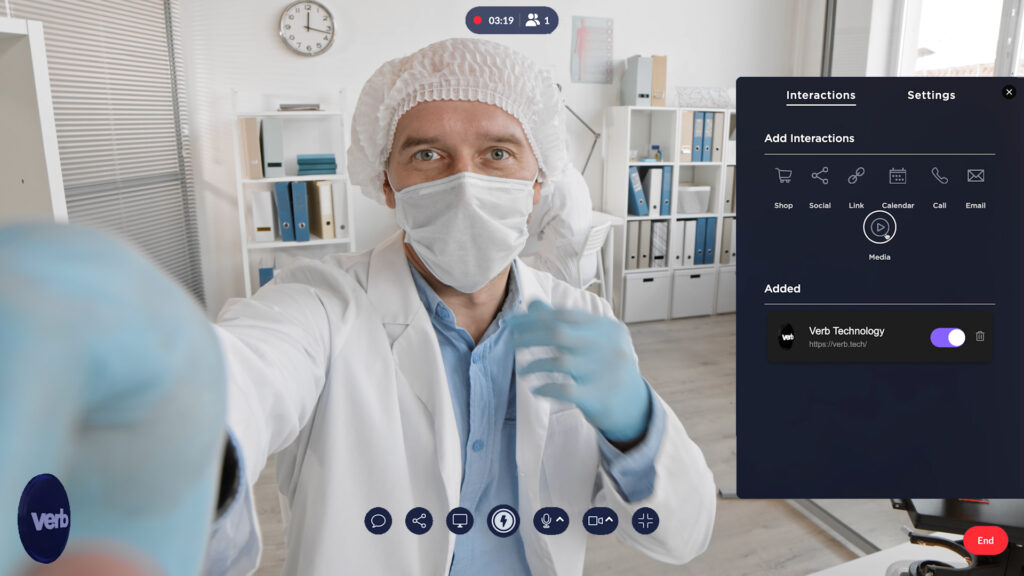3D animation is a technique that creates the illusion of motion through the manipulation of 3D objects. It involves generating three-dimensional images using computer graphics software. On the other hand, traditional training methods encompass conventional approaches to education and skill development, relying on face-to-face interactions and tangible resources.
Over the years, 3D animation has undergone significant advancements, leveraging cutting-edge technologies to produce more realistic and immersive experiences. Similarly, traditional training methods have evolved with the integration of digital tools and online platforms, enhancing accessibility and scalability.
Both 3D animation and traditional training methods play vital roles across various industries, including education, entertainment, healthcare, and corporate sectors. They serve as effective tools for conveying information, fostering learning, and enhancing skills.
The origins of 3D animation can be traced back to the 1970s, with the development of computer-generated imagery (CGI) techniques. Meanwhile, traditional training methods have been prevalent throughout human history, encompassing practices such as apprenticeships, lectures, and hands-on training.
Understanding 3D Animation
A. What is 3D Animation?
- Definition and Basics
3D animation involves creating moving images in a three-dimensional space, allowing for more lifelike representations of objects and characters.
- Elements and Techniques
It encompasses various elements such as modeling, texturing, rigging, animation, and rendering, each requiring specialized skills and software tools.
- Software and Tools
Popular software packages for 3D animation include Autodesk Maya, Blender, and Cinema 4D, offering a wide range of features for artists and animators.
- Examples of 3D Animation in Different Fields
From blockbuster films like “Toy Story” to architectural visualizations and medical simulations, 3D animation finds applications in diverse industries, showcasing its versatility and impact.
B. Benefits of 3D Animation
- Enhanced Visualization
3D animation allows for the visualization of complex concepts and scenarios, making abstract ideas more tangible and easier to understand.
- Increased Engagement
By offering immersive and interactive experiences, 3D animation captivates audiences and enhances engagement levels, leading to better learning outcomes.
- Flexibility and Customization
With 3D animation, content can be easily customized to suit specific learning objectives and audience preferences, providing a tailored learning experience.
- Cost-Effectiveness
While initial investments in 3D animation may be substantial, the ability to reuse assets and streamline production processes can result in long-term cost savings.
C. Challenges and Limitations
- Complexity of Creation
Creating high-quality 3D animation requires specialized skills and knowledge, posing a steep learning curve for beginners and novice animators.
- Resource Intensiveness
3D animation projects often require significant computational resources and rendering time, which can be resource-intensive and time-consuming.
- Technical Constraints
The hardware and software requirements for 3D animation can be prohibitive for some users, limiting accessibility and adoption.
- Learning Curve for Users
Learning to navigate and utilize 3D animation software effectively can be challenging, requiring dedication and practice to master.
D. Real-Life Applications
- Education and Training
In the education sector, 3D animation is used to create interactive learning materials, virtual laboratories, and educational games to enhance student engagement and comprehension.
- Entertainment Industry
In the entertainment industry, 3D animation is ubiquitous in the production of animated films, video games, and visual effects for television and movies.
- Advertising and Marketing
Advertisers leverage 3D animation to create captivating advertisements, product visualizations, and promotional videos that grab the audience’s attention and drive sales.
- Healthcare and Medicine
In healthcare, 3D animation is employed for medical education, surgical simulations, and patient education materials, facilitating better understanding and communication of complex medical concepts.
Exploring Traditional Training Methods
A. Definition and Overview
- What Constitutes Traditional Training Methods?
Traditional training methods encompass a wide range of approaches, including lectures, seminars, workshops, on-the-job training, and apprenticeships.
- Historical Context and Development
Traditional training methods have evolved over centuries, drawing from established practices such as mentorship, apprenticeships, and guild systems.
- Traditional vs. Modern Training Approaches
While traditional training methods have been the cornerstone of education and skill development for generations, they are increasingly being complemented by modern digital tools and online platforms.
- Examples of Traditional Training Techniques
Examples of traditional training techniques include classroom lectures, hands-on demonstrations, role-playing exercises, and mentoring programs.
B. Advantages of Traditional Training Methods
- Personal Interaction and Feedback
Traditional training methods foster direct interaction between instructors and learners, enabling immediate feedback and clarification of doubts.
- Accessibility and Familiarity
Traditional training methods are widely accessible and familiar to learners, requiring minimal technological expertise or equipment.
- Hands-On Experience
Hands-on training allows learners to apply theoretical knowledge in real-world scenarios, enhancing retention and skill development.
- Immediate Clarification of Doubts
In traditional training settings, learners can seek clarification and guidance from instructors in real-time, facilitating better understanding and comprehension.
C. Limitations and Drawbacks
- Repetitive Nature
Traditional training methods can be repetitive and monotonous, leading to disengagement and boredom among learners.
- Limited Scalability
Traditional training methods are often limited in scalability, making it challenging to accommodate large numbers of learners simultaneously.
- Dependency on Physical Resources
Traditional training methods may require physical resources such as classrooms, equipment, and materials, which can be costly and restrictive.
- Inefficiency in Complex Concepts
For complex or abstract concepts, traditional training methods may not be as effective as interactive or multimedia-based approaches, limiting comprehension and retention.
D. Applications Across Industries
- Corporate Training and Workshops
In the corporate sector, traditional training methods such as seminars, workshops, and on-the-job training are commonly used to onboard new employees and develop essential skills.
- Academic Education
In academia, traditional training methods such as lectures, tutorials, and laboratory sessions remain integral components of the educational experience.
- Skill Development Programs
Traditional training methods are employed in skill development programs for various trades and professions, providing hands-on training and mentorship opportunities.
- Professional Certification Courses
Professional certification courses often rely on traditional training methods to prepare candidates for exams and assessments, ensuring competence and proficiency in specific domains.
Comparative Analysis: 3D Animation vs. Traditional Training Methods
A. Learning Effectiveness
- Retention Rates and Knowledge Transfer
Studies have shown that 3D animation can lead to higher retention rates and better knowledge transfer compared to traditional training methods, thanks to its immersive and interactive nature.
- Engagement Levels and Motivation
3D animation tends to be more engaging and motivating for learners, as it offers a more visually stimulating and interactive learning experience compared to traditional methods.
- Adaptability to Different Learning Styles
3D animation can cater to various learning styles, including visual, auditory, and kinesthetic, making it more inclusive and accessible than traditional training methods.
- Case Studies and Research Findings
Numerous case studies and research findings support the efficacy of 3D animation in enhancing learning outcomes across different domains and industries.
B. Cost Analysis
- Initial Investment and Setup Costs
While the initial investment in 3D animation may be higher than traditional training methods, the long-term benefits and cost savings justify the expenditure.
- Long-Term Maintenance Expenses
Maintenance expenses for 3D animation systems are generally lower than traditional training methods, as digital assets can be easily updated and repurposed.
- ROI and Cost-Effectiveness
When considering the return on investment (ROI), 3D animation often offers greater value for money in terms of improved learning outcomes and engagement levels.
- Comparative Cost-Benefit Analysis
A comprehensive cost-benefit analysis comparing 3D animation and traditional training methods would take into account factors such as effectiveness, scalability, and long-term sustainability.
C. Accessibility and Reach
- Geographic Limitations
Traditional training methods may be limited by geographic constraints, requiring learners to be physically present in a specific location for training sessions.
- Remote Learning Opportunities
3D animation enables remote learning opportunities, allowing learners to access training materials and resources from anywhere with an internet connection.
- Inclusivity and Accessibility Features
With features such as closed captioning, language localization, and adaptive learning pathways, 3D animation can accommodate diverse learner needs and preferences.
- Technological Requirements and Infrastructure
While 3D animation relies on digital technology and infrastructure, the increasing ubiquity of smartphones, tablets, and computers makes it accessible to a broader audience.
D. Customization and Personalization
- Tailoring Content to Specific Audiences
3D animation enables content creators to tailor learning materials to specific audiences, incorporating cultural nuances, language preferences, and learning objectives.
- Adaptability to Individual Learning Paces
Through interactive elements and branching scenarios, 3D animation can adapt to individual learning paces, providing personalized learning experiences for each learner.
- Incorporation of Feedback and Iterative Improvement
Feedback mechanisms built into 3D animation platforms allow for continuous improvement and refinement based on learner input and performance data.
- Scalability for Large-Scale Training Programs
3D animation offers scalability advantages over traditional training methods, as digital content can be replicated and distributed to large numbers of learners simultaneously.
Future Trends and Innovations
A. Emerging Technologies in 3D Animation
- Virtual Reality (VR) Integration
The integration of VR technology into 3D animation opens up new possibilities for immersive and interactive training experiences.
- Augmented Reality (AR) Applications
AR applications enhance real-world environments with digital overlays, enriching training experiences and bridging the gap between physical and virtual worlds.
- Artificial Intelligence (AI) in Animation
AI-driven animation tools automate repetitive tasks and enhance creativity, allowing animators to focus on storytelling and artistic expression.
- Interactive and Immersive Experiences
The future of 3D animation lies in creating interactive and immersive experiences that blur the lines between reality and virtuality, revolutionizing training and education.
B. Evolution of Traditional Training Methods
- Integration of Online Platforms
Traditional training methods are increasingly being integrated with online platforms and digital tools, enabling hybrid learning experiences and remote training opportunities.
- Gamification and Interactive Learning Modules
Gamification techniques make learning more engaging and enjoyable, motivating learners to achieve their goals and progress through training programs.
- Mobile Learning Solutions
Mobile learning solutions cater to the growing demand for on-the-go training experiences, allowing learners to access content anytime, anywhere.
- Blended Learning Approaches
Blending traditional and digital training methods offers the best of both worlds, combining the benefits of hands-on instruction with the flexibility of online learning.
C. Convergence of 3D Animation and Traditional Methods
- Hybrid Training Models
Hybrid training models leverage both 3D animation and traditional methods to create comprehensive and effective learning experiences that cater to diverse learner needs.
- Cross-Platform Integration
Cross-platform integration allows learners to seamlessly transition between different training modalities, ensuring continuity and consistency in learning.
- Synergies for Enhanced Learning Outcomes
By combining the strengths of 3D animation and traditional methods, training programs can achieve greater learning outcomes and ROI.
- Case Studies and Success Stories
Real-world examples of successful integration of 3D animation and traditional methods demonstrate the effectiveness and potential of hybrid training approaches.
D. Predictions and Speculations
- Industry Projections and Growth Trajectories
The 3D animation industry is poised for continued growth, driven by technological advancements, increased demand for immersive experiences, and the proliferation of online training platforms.
- Technological Advancements in Training
Advancements in technology will continue to shape the future of training and education, with AI, VR, and AR playing increasingly prominent roles in enhancing learning experiences.
- Impact on Education and Professional Development
The convergence of 3D animation and traditional methods will revolutionize education and professional development, making learning more accessible, engaging, and effective.
- Challenges and Opportunities Ahead
While the future of training holds immense promise, it also presents challenges such as technological barriers, ethical considerations, and the need for continuous innovation and adaptation.
Conclusion
The comparison between 3D animation and traditional training methods reveals the unique strengths and limitations of each approach. As technology continues to evolve, it is essential for educators, trainers, and decision-makers to adapt and innovate to meet the changing needs of learners.
Decision-makers should carefully evaluate their training objectives, audience needs, and resource constraints when choosing between 3D animation and traditional methods. By embracing change and leveraging the synergies between 3D animation and traditional methods, we can create more effective, engaging, and inclusive training experiences for learners worldwide.

